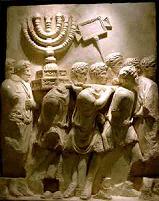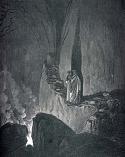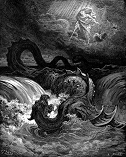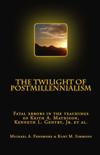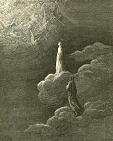The First Century Church in Rome
MCMXCIX
iv
THE BAMPTON LECTURES
FOR 1913
v
THE CHURCH IN
ROME
IN THE FIRST CENTURY
AN EXAMINATION OF
VARIOUS CONTROVERTED QUESTIONS
RELATING TO ITS HISTORY, CHRONOLOGY, LITERATURE AND
TRADITIONS
EIGHT LECTURES
PREACHED BEFORE
THE UNIVERSITY OF OXFORD
IN THE YEAR 1913
ON THE FOUNDATION
OF THE LATE REV. JOHN BAMPTON, M.A.
CANON OF SALISBURY
BY
GEORGE EDMUNDSON, M.A.
LATE FELLOW AND TUTOR OF BRASENOSE COLLEGE,
VICAR OF ST. SAVIOUR, UPPER CHELSEA
LONGMANS, GREEN AND CO.
39 PATERNOSTER ROW, LONDON
NEW YORK, BOMBAY AND CALCUTTA
1913
CAROLO BULLER
HEBERDEN
D.C.L.
AUL. REG. ET COLL. AEN. NAS. PRINCIPALI
ACAD. OXON. VICECANCELLARIO
AMICITIAE PROBATAE
TESTIMONIUM
D. D. D.
OLIM PER DECENNIUM COLLEGA
ii
Table of Contents
Lecture I
Lecture II
Lecture III
Lecture IV
Lecture V
Lecture VI
Lecture VII
Lecture VIII
SYNOPSIS OF CONTENTS
|
LECTURE I |
||
|
Character of the theme—The Rome of Claudius and of Nero—Intercourse—Population—Slavery—The ‘Freedman’ Class—Alien admixture—The Jewish Colony and its history—Its privileges and characteristics—Judaism attractive—Proselytes and ‘God-fearers’—The Synagogues—Soil prepared for Christianity—The Laureolus—The Jews expelled by Claudius—Aquila and Prisca at Corinth—Their antecedents and position—Their close intercourse with St. Paul—St. Paul at Ephesus—His Journey to Greece—He writes to the Roman Church from Corinth—The Epistle to the Romans: an Apologia—St. Paul’s proposed visit to Rome—Three groups of Roman Christians addressed—The impelling motive of the Epistle—The Judaeo-Christians at Rome—The Salutations of Chap. xvi, 1-23—Genuineness of the passage—Criticism dealt with—The Church in the house of Prisca and Aquila—Was this Ecclesia Domestica existent before 57 A.D.?—The Apostles Andronicus and Junias—The households of Aristobulus and Narcissus—The auto-biographic passage Chap. xv. 14-29—‘Another man’s foundation’—Was the other man St. Peter? |
1–29 |
|
|
LECTURE II |
||
|
The Lukan authorship of the Acts—Fragmentary character of the narrative—The Acts written before 62 A.D.—The closing verses of the Acts—The Day of Pentecost—The sojourning Romans—The Twelve at Jerusalem—The Hellenists and St. Stephen—Consequences of St. Stephen’s martyrdom—Activity of St. Peter —The vision at Joppa—Conversion of Cornelius—Missionaries at Antioch—Barnabas sent to Antioch—He seeks Saul—The name Christiani—Herod Agrippa persecutes the Church—St. Peter escapes from prison—St. James and the Brethren—Value of tradition—Oral tradition—Early Christian written records—Their destruction—Apocryphal ‘Acts’—Criteria of authenticity—Evidence for St. Peter’s martyrdom at Rome—‘Ascension of Isaiah’—Clement of Rome—Ignatius—Dionysius x of Corinth—Irenaeus—The Episcopal lists—Eusebius of Caesarea—Jerome—The Petrine tradition universally accepted in East and West alike—Archaeological evidence—Portraits—Sepulchral inscriptions—Mosaics—Frescoes—The Petrine ‘legends’ based on fact—The Preaching of Peter—Local memories—St. Peter at Rome—The envoy of the Twelve—Precedents of Samaria and Antioch—Analogy of circumstances |
30–58 |
|
|
LECTURE III |
||
|
St. Peter encounters Simon Magus at Rome—Eusebius on the story of Simon Magus—His visit to Rome in Claudius’ reign, and success—Weighty evidence of Justin Martyr, of Irenaeus and Hippolytus—The theories of Baur and Lipsius untenable—Vogue of Oriental cults and teachers at Rome—John Mark Peter’s interpreter—Origin of St. Mark’s Gospel—Its date—Jerome’s version of the Petrine tradition—His sources of information—Relations with Pope Damasus—The Hieronymian tradition and that of the Liberian Catalogue—The differences between them—Chronological difficulties and discrepancies—Attempted solution—The Antiochean narrative [ Acts xi. and xii.] examined—Barnabas and Paul bear alms to Jerusalem, 46 A.D.—They meet Peter on his return from Rome—Peter makes Antioch the missionary centre of his work, 47–54 A.D.—Peter with Barnabas at Corinth, 54 A.D.—Testimony of the First Epistle to the Corinthians—Accession of Nero—Peter and Barnabas journey to Italy—Evidence of Bamabas’ missionary activity in Rome and North Italy—No rivalry between St. Peter and St. Paul at Corinth—Paul’s delay in visiting Rome due to Peter’s presence there, 54–56 A.D.—First organisation of the Roman Church—The trial of Julia Pomponia Graecina—Inscription in the crypt of Lucina |
59–86 |
|
|
LECTURE IV |
||
|
St. Paul’s visit to Jerusalem, Pentecost, 57 A.D., and captivity at Caesarea—Character of the administration of Felix—Accuracy and trustworthiness of the Lukan narrative—St. Paul’s financial resources—Indulgent treatment of St. Paul by Felix—Influence of Drusilla—Recall of Felix—Elymas or Etoimos—Attitude of Festus—St. Paul’s appeal to Caesar—His motives in appealing —St. Paul’s journey from Puteoli to Rome—He is delivered in charge to the Stratopedarch—The favours accorded to him—St. Paul invites the Jewish leaders to meet him—His interviews with the chiefs of the Synagogues—The Apostle’s appeal to the Jews is fruitless—The Epistles of the First Captivity—The earlier group—Colossians, Ephesians, Philemon—Their tone cheerful—Release expected—Many friends surround the Apostlexi—Mark, the cousin of Barnabas, at Alexandria—His visit to Rome and mission to Colossae—The Epistle to the Philippians—Changed situation—Friends absent—Issue of trial in doubt but Paul hopeful—The letter of a friend to friends—Discords at Philippi—The ‘true yoke-fellow’—Clement—Caesar’s household—St. Paul is set at liberty—Probable course of the trial |
87–114 |
|
|
LECTURE V |
||
|
A High-Priestly embassy in Rome—Growth of hostility between Jew and Christian—The Christians accused of anarchism and secret crimes—St. Peter’s last visit to Rome in 63 A.D.—The First Epistle of St. Peter—Its genuineness—The Epistle written at Rome—Its literary indebtedness to other New Testament writings—St. Peter acquainted with the Epistles to the Romans and Ephesians—Mark and Silvanus with Peter at Rome—The great fire of July 19, 64 A.D.—Rumour attributes the fire to Nero—Steps taken by Nero to efface the rumour—The Pisonian conspiracy and its suppression—The charges brought against the Christians—The Tacitean account of their sufferings—Character of the Neronian persecution—The personal act of Nero—Tigellinus, the active agent of Nero’s cruelty—The Christians not implicated in the burning of Rome—Origin of the charge of incendiarism—Apocalyptic utterances—Tigellinus and Apollonius of Tyana: a parallel—Atheism, Thyestean feasts, Oedipodean intercourse—Hatred of the human race, ‘Institutum Neronianum’—‘Crimina adhaerentia Nomini’—Christian contemporary evidence—The spectacle in the Vatican Gardens —The arrest of the great multitude, end of April, 65 A.D.—Comparison of evidence from Tacitus, Suetonius and Orosius fixes the date—Persecution in the Provinces |
115–144 |
|
|
LECTURE VI |
||
|
Deaths of St. Peter and St. Paul at Rome—Their tombs piously preserved—They were not martyred on the same day—Manner of their deaths—How the mistake as to a common date arose —Statement of Prudentius—The ‘Quo Vadis?’ story examined —St. Peter’s crucifixion in the early summer of 65 A.D.—The Epistle to the Hebrews—Addressed to Judaeo-Christians at Rome—Internal and external evidence for this—The Epistle never received as Pauline in Rome or the West—Tertullian names Barnabas as the author—Barnabas well qualified to write this Epistle—Sent to Rome, as an eirenicon—The personal references support the Barnabean hypothesis—The Pastoral Epistles—St. Paul’s second imprisonment at Rome—His sense of desertion—His death, 67 A.D.—The Apocalypse written in 70 A.D.—Statements of Irenaeus and Origen considered—Eusebius’ use of his xiiauthorities—Evidence of Victorinus and Jerome—The book reflects contemporary history—Neronian Persecution—Events of 69 A.D.—Burning of the Capitol—Domitian in power, Jan. to June, 70 A.D.—Nerva Consul, 71 A.D.—Temple of Jerusalem still standing—The Number of the Beast—Nero Caesar—The Apocalypse, a Neronian document—Nero is Anti-Christ—The Nero legend—Armageddon—Impressions of an eye-witness—Earthquakes and convulsions of nature—The islands of Patmos and Thera |
145–179 |
|
|
LECTURE VII |
||
|
The First Century Episcopal Succession at Rome—The Jewish Synagoge and the Christian Ecclesia—The Official Ministry in the early Church—Duties and position of episcopi—Pastors and Stewards with cure of souls—They form an inner Presbyterate—Its president The Bishop—Apostles, Prophets, Teachers and their functions—The Didache an untrustworthy authority for the First Century—The genuine Epistle of Clement to the Corinthians—Not written in 96 A.D. but in beginning of 70 A.D.—The recent examples of our own time—The Neronian persecution fresh in memory—The sudden and successive troubles and calamities of 69 A.D.—Internal evidence of the Epistle to its early date—Church Organisation—Christology—New Testament Quotations—The Daily Sacrifice at Jerusalem had not ceased—The Corinthian dissensions—Predisposing circumstances, 66–68 A.D.—Reference to the Phoenix—Episcopal succession—Apostolical regulations—The disturbers of the peace at Corinth rebuked—Force of the word ἀρχαίαν—The bearers of the Epistle to Corinth—No allusion to Clement as the writer—Authoritative position of Clement in 96 A.D.—The Epistle belongs to an earlier time—Written by him as secretary to the Presbyterate—Interesting inscription |
180–205 |
|
|
LECTURE VIII |
||
|
Attitude of the Flavian emperors to the Christians—A quarter of a century of moderation—Titus personally hostile—‘The Shepherd’ of Hernias: a Flavian writing—Blunder of the Muratorian Fragmentist—The notice in the ‘Liberian Catalogue’—The Muratorian and Liberian statements derived from a common source—Hermas confused with the presbyter Pastor—Patristic testimony supports the early date—Irenaeus, Clement of Alexandria, Tertullian—Unity of ‘The Shepherd’—It contains a real life story—Hermas a contemporary of Clement of Rome—Harnack’s views discussed—The book in three parts, but the period covered by it short—Hermas’ references to the Neronian persecution—To the organisation of the Church—Its primitive character—Signs of an evolutionary movement—Contentions xiiiabout precedence—Growth of a Monarchical Episcopate—The persecution of Domitian—In its origin fiscal—The didrachma tax—Many Christians of high position suffer—Flavius Clemens put to death—His wife Flavia Domitilla banished—Flavius Sabinus, father and son—Flavius Clemens the Consul and Clemens the bishop—A third contemporary Clemens—M. Arrecinus Clemens is Consul 94 A.D.—He is put to death by his relative Domitian—The two Flavia Dornitillas—The ‘Acts of Nereus and Achilles’—Plautilla the sister of Clemens the Consul—Relationship between the Flavian and Arrecinian families —Is Clement the bishop brother of Arrecinus Clemens?—The death of M. Acilius Glabrio—The Acilian Crypt in the cemetery of Priscilla—Conclusion |
206–237 |
|
|
APPENDICES |
||
|
Chronological Statement Note A. |
239–241 |
|
|
Aquila and Prisca or Priscill Note B. a |
242–3 |
|
|
The Pudens Legend Note C. |
244–249 |
|
|
The Family Connexion of Clement the Bishop Note D. |
250–258 |
|
|
The Tombs of the Apostles St. Peter and St. Note E. Paul |
259–272 |
|
|
The Cemeteries of Priscilla and Domitilla Note F. |
273–282 |
|
|
Index |
283 |
|
|
Index of Scripture References |
|
|
To receive Kurt Simmons’ e-mail newsletter, The Sword & The Plow, click the Subscribe link:
All rights reserved.
